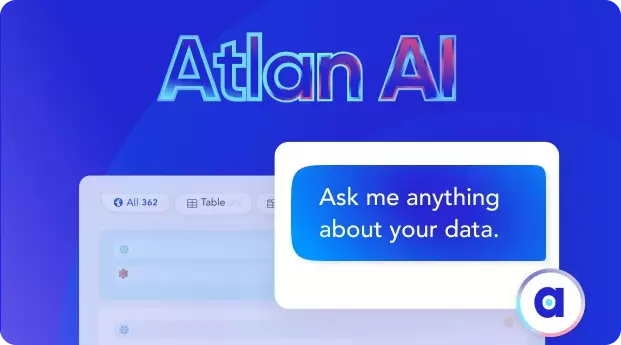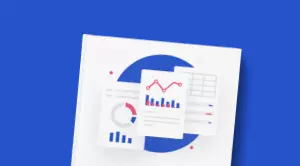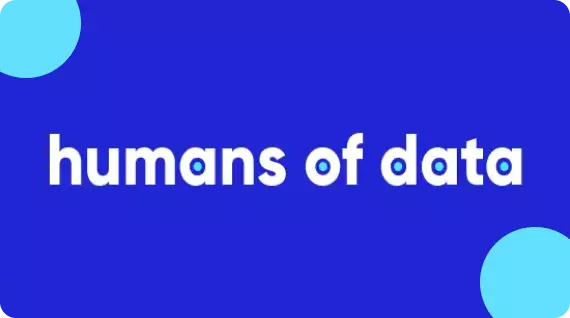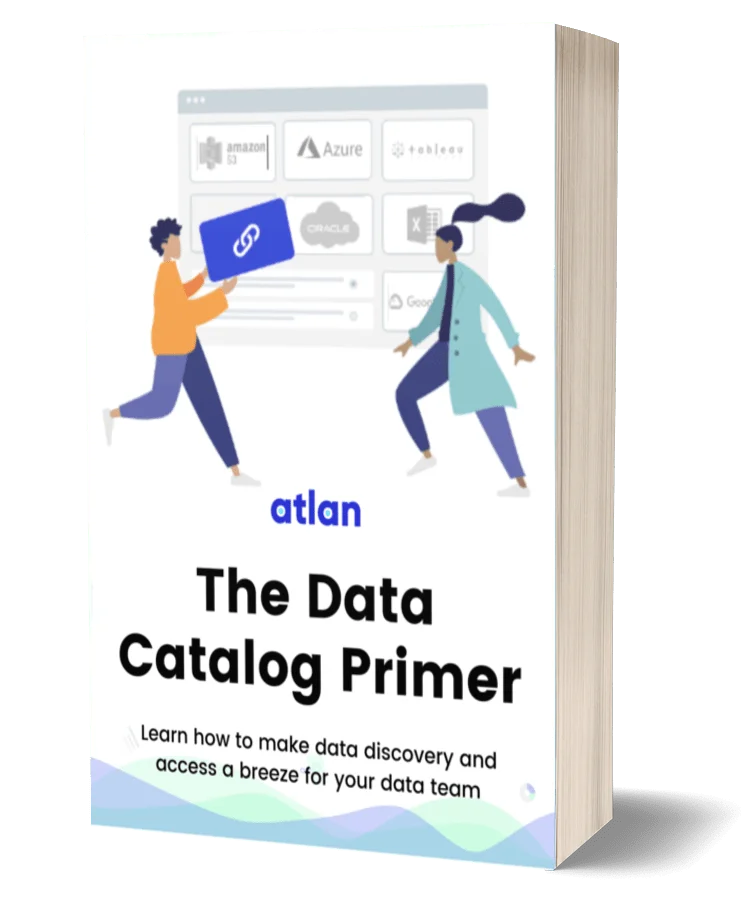How to Create a Business Glossary: A Step-by-Step Plan
Share this article
Creating a business glossary is an essential step toward ensuring that all stakeholders in your organization have a clear understanding of the terminology, data definitions, and data lineage. Moreover, this will improve communication, reduce misunderstandings, and facilitate better decision-making.
See How Atlan Streamlines Metadata Management – Start Tour
In this article, we will explore why is a business glossary important for your business, steps to create one, a few templates to get you off the block, and the best practices you need to keep in mind.
Let’s get started!
Table of contents #
- 8 Reasons why you need a business glossary
- How to create a business glossary? Breaking down the steps
- Business glossary templates: Examples to help you get started
- Scaling the most practical business glossary template
- Business glossary best practices: How to get it right
- Books and online resources to learn about business glossaries
- Rounding it all up
- Related reads
8 Reasons why you need a business glossary #
Before we understand how to create a business glossary, let us try and understand why do we need it in the first place.
Today, businesses are increasingly leveraging vast amounts of data to drive decisions and strategies. As companies embark on their data-driven journey, a common understanding of business terms becomes vital. This is where a business glossary comes into play for the following reasons:
- Ensures consistent terminology
- Reduces ambiguity and misunderstandings
- Improves data quality and integrity
- Streamlines data governance processes
- Facilitates better communication between teams
- Enhances the effectiveness of data analytics
- Supports regulatory compliance
- Aids in onboarding and training
Let us now look into each of the above reasons in detail:
1. Ensures consistent terminology #
A business glossary provides a centralized reference for all business terms. When everyone in the organization uses the same definitions for terms, it ensures consistency across departments and systems. This uniformity prevents confusion and minimizes the risk of misinterpreting data.
2. Reduces ambiguity and misunderstandings #
Ambiguity can be a major roadblock in making informed decisions. When terms are clearly defined in a business glossary, stakeholders can avoid misinterpretations, ensuring that business strategies are based on accurate understandings.
3. Improves data quality and integrity #
Consistency in terminology often leads to higher data quality. When data sources are tagged and associated with precise definitions, it reduces the chance of data being misused or misinterpreted. As a result, businesses can trust the integrity of their data when making critical decisions.
4. Streamlines data governance processes #
Data governance involves managing and ensuring the quality, availability, and integrity of data across an organization. A business glossary acts as a foundational tool in this process, helping to define the rules and standards for data usage, classification, and handling.
5. Facilitates better communication between teams #
Different departments or teams might have different interpretations of the same term. A business glossary bridges this gap, providing a shared language that ensures all teams are on the same page, fostering more effective cross-functional collaboration.
6. Enhances the effectiveness of data analytics #
Data analytics relies on precise and consistent data. When analysts are assured of the consistency and clarity of terms, they can more confidently draw insights and make predictions, leading to more impactful data-driven strategies.
7. Supports regulatory compliance #
Many industries are bound by strict regulatory requirements concerning data management and reporting. A business glossary ensures that all terms are defined according to industry standards, aiding in compliance and minimizing risks associated with regulatory breaches.
8. Aids in onboarding and training #
For new employees or those moving to different roles within the organization, a business glossary acts as a valuable resource. It helps them quickly understand company-specific terminology, making the transition smoother and ensuring that they can contribute effectively in a shorter time frame.
A business glossary is an indispensable tool for data-driven businesses. With a shared understanding of terms and data across the organization, data-driven companies can ensure consistency, improve communication, and drive better decision-making.
In the next section, we will look into the steps of how to create a data dictionary.
How to create a business glossary? Breaking down the steps #
Here’s a step-by-step guide on how to get started with creating a business glossary:
1. Identify your stakeholders #
Determine who will be involved in the creation and maintenance of the business glossary. This could include representatives from the data, engineering, and Salesforce teams, as well as other relevant departments. Make sure that these stakeholders are committed to the project and understand its importance.
2. Define your scope #
Decide on the scope of the business glossary. This will likely include key terms and concepts related to travel & finance management, as well as any specific terms used by your organization. You can start with a smaller scope and expand it over time.
3. Collect and compile terms #
Gather a list of terms and concepts that need to be included in the business glossary. You can source these from existing documentation, such as data dictionaries, data models, and process flows, as well as by interviewing subject matter experts within your organization.
4. Define the terms #
Collaborate with your stakeholders to provide clear, concise definitions for each term. These definitions should be easily understood by both technical and non-technical users. Make sure to include any relevant context, such as how the term is used within the organization or in the industry.
5. Establish a governance process #
Develop a process for maintaining and updating the business glossary. This should include guidelines for adding new terms, updating existing definitions, and removing outdated terms. The governance process should also outline roles and responsibilities, such as who can propose changes and who has the authority to approve them.
6. Choose a platform #
Select a platform or tool to host your business glossary. This can be a dedicated glossary tool, a data catalog, or a simple wiki or document management system. Ensure that the platform is easily accessible to all stakeholders and allows for versioning and tracking changes.
7. Populate the glossary #
Enter the terms and their definitions into the chosen platform. Make sure that the information is well-organized and easy to navigate. Consider using categories or tags to group related terms.
8. Communicate and train #
Inform all relevant stakeholders about the existence of the business glossary and provide training on how to use it. Encourage everyone to refer to the glossary whenever they encounter unfamiliar terms or need clarification on definitions.
9. Maintain and update #
Regularly review and update the business glossary to keep it current and accurate. Encourage stakeholders to provide feedback and suggest changes as needed.
By following these steps, you’ll create a comprehensive and well-maintained business glossary that serves as a valuable resource for everyone in your organization.
Business glossary templates: Examples to help you get started #
Here are a few examples of business glossary templates to help guide you in creating your own. Each template provides a different approach to organizing and presenting terms and definitions.
Let’s dive in!
1. Simple Excel template #
A basic Spreadsheet/Excel template can be a good starting point for a business glossary. You can use software like Microsoft Excel or Google Sheets.
| Term | Definition | Category | Last Updated | Updated By |
|---|---|---|---|---|
| Cost Center | A business unit responsible for managing and tracking costs. | Finance | 2023-05-01 | John Doe |
| Net Revenue | Total revenue minus the cost of goods sold. | Finance | 2023-04-28 | Jane Smith |
| Booking Class | A code used to categorize airline tickets by price & rules. | Travel | 2023-04-25 | Mike Brown |
2. Wiki-style template #
A wiki-style template can be used if you prefer a more narrative approach to presenting terms and definitions. This can be created using tools like Confluence or an internal wiki system.
Cost Center
- Category: Finance
- Definition: A business unit responsible for managing and tracking costs.
- Last Updated: 2023-05-01
- Updated By: John Doe
Net Revenue
- Category: Finance
- Definition: Total revenue minus the cost of goods sold.
- Last Updated: 2023-04-28
- Updated By: Jane Smith
Booking Class
- Category: Travel
- Definition: A code used to categorize airline tickets by price & rules.
- Last Updated: 2023-04-25
- Updated By: Mike Brown
3. Data catalog or dedicated glossary tool #
Data catalogs or dedicated glossary tools often come with built-in templates and features to help create and maintain a business glossary. These tools often provide search functionality, category organization, and version control.
Keep in mind that the chosen template should fit your organization’s needs and preferences. It should be easily accessible, simple to navigate, and allow for efficient maintenance and updates.
Scaling the most practical business glossary template #
Out of the three above-mentioned templates, the most scalable and actively maintained option would be using a data catalog or a dedicated glossary tool.
These tools are specifically designed for managing business glossaries and metadata, providing several advantages:
1. Scalability #
As your organization grows and the number of terms increases, these tools can handle the expanding volume of data without performance issues.
2. Advanced features #
Dedicated glossary tools often come with built-in features like search functionality, version control, customizable categorization, and access controls, which make it easier to manage and maintain the glossary.
3. Collaboration #
These tools allow multiple users to contribute to the glossary, suggest changes, and review updates, which promotes collaboration and helps keep the glossary current.
4. Integration #
Many data catalog and glossary tools can integrate with other data management systems, making it easier to align your business glossary with your organization’s data architecture.
While spreadsheet and wiki-style templates can be effective for smaller organizations or those with fewer terms, they may become more challenging to manage as the volume of data grows. Dedicated glossary tools offer a more robust and scalable solution that can better support the long-term needs of your organization.
Business glossary best practices: How to get it right #
A business glossary helps ensure the entire organization can understand, access, and apply common definitions to foster a cohesive and data-driven environment. To achieve this, there are some best practices one should adhere to:
- Involve stakeholders from across the organization
- Ensure clear and concise definitions
- Standardize the format and structure
- Prioritize continuous updates and maintenance
- Foster accessibility and visibility
- Use relatable examples and use cases
- Categorize terms for easier navigation
- Integrate with other data governance tools
- Solicit feedback regularly
- Implement a version control system
Now, let us look into each of the above best practices in detail:
1. Involve stakeholders from across the organization #
Collaborate with representatives from various departments when creating the glossary. Their insights ensure that the glossary covers all essential terms and reflects the understanding and needs of the entire organization.
2. Ensure clear and concise definitions #
Definitions should be easily understandable by all members of the organization, regardless of their technical background. Avoid jargon and ensure each definition is succinct yet comprehensive.
3. Standardize the format and structure #
To maintain consistency, it’s crucial to have a standardized format for definitions, including aspects like length, terminology, and structure. This makes it easier for users to find and understand terms.
4. Prioritize continuous updates and maintenance #
Business landscapes evolve, and so should the glossary. Regularly review and update the glossary to include new terms, refine existing definitions, and remove outdated entries.
5. Foster accessibility and visibility #
The glossary should be easily accessible to all team members, preferably through a centralized platform. Promote its existence and encourage employees to refer to it as a primary resource.
6. Use relatable examples and use cases #
Illustrative examples can make complex terms easier to grasp. Where possible, include real-world or company-specific examples to enhance clarity.
7. Categorize terms for easier navigation #
Organize terms into relevant categories or themes, allowing users to quickly locate terms related to specific topics or departments.
8. Integrate with other data governance tools #
A business glossary is a component of a broader data governance strategy. Integrate it with other tools like data dictionaries or metadata repositories to provide a holistic view of the organization’s data landscape.
9. Solicit feedback regularly #
Encourage users to provide feedback on the glossary. This can highlight areas for improvement, potential additions, or clarifications needed on existing terms.
10. Implement a version control system #
As updates are made to the glossary, it’s essential to track changes and maintain a history of revisions. This ensures transparency and allows users to understand the evolution of terms over time.
A well-structured and maintained business glossary is an invaluable asset for data-driven organizations. By following these best practices, businesses can ensure their glossary remains a relevant, user-friendly, and comprehensive tool for all stakeholders.
Books and online resources to learn about business glossaries #
Here are some books and resources that can help you learn more about business glossaries and how to create them:
Books #
- “Data Governance: How to Design, Deploy and Sustain an Effective Data Governance Program” by John Ladley: This book provides a comprehensive guide to data governance, which includes a section on creating business glossaries.
- “The Data Catalog: Sherlock Holmes’ Data Sleuthing Adventures” by Bonnie O’Neil and Lowell Fryman: This book covers data catalog concepts, which can help you understand how to create and maintain a business glossary within a data catalog.
- “Data Management for Researchers: Organize, maintain and share your data for research success” by Kristin Briney: This book provides an overview of data management concepts, including data documentation and metadata, which are relevant to creating a business glossary.
Online Resources #
- DAMA International (Data Management Association) - The DAMA website offers various resources on data management topics, including business glossaries. Consider becoming a member to access their library of resources, webinars, and the Data Management Body of Knowledge (DMBOK).
- TDAN (The Data Administration Newsletter) - This online publication provides articles and resources on various data management topics, including business glossaries and data governance.
- **Data Governance Professionals Organization - The DGPO is a membership-based organization focused on data governance, offering resources, webinars, and events that can help you learn more about business glossaries.
- Online forums and communities - Platforms like LinkedIn and Reddit have dedicated groups or subreddits (such as r/datagovernance) where you can connect with other professionals, ask questions, and share resources related to business glossaries and data governance.
These books and resources should provide you with a solid foundation to learn about business glossaries and best practices for creating and maintaining them.
Rounding it all up #
Creating a business glossary is crucial to ensure clear communication, reduce misunderstandings, and facilitate better decision-making. To create a comprehensive glossary, you must identify your stakeholders, define the scope, collect and compile terms, define the terms, establish a governance process, choose a platform, populate the glossary, communicate and train, and maintain and update the glossary regularly.
A simple spreadsheet, wiki-style template, or a dedicated glossary tool are different options to create and maintain a business glossary. The selected template should be easily accessible, simple to navigate, and allow for efficient maintenance and updates. Regularly review and update the business glossary to keep it current and accurate.
If you are evaluating a business glossary tool for your team, do take Atlan for a spin - Atlan is more than a business glossary solution, it is a collaborative metadata management and data catalog tool that enables a shared understanding of data.
How to create a business glossary: Related reads #
- What is Business Glossary? - Definition, Example & 5 Common Challenges
- What is a Business Data Glossary Template & How to Create One for Your Organization
- Business Glossary vs. Data Catalog - Fundamentals, Use Cases, Examples & More
- What Is a Data Glossary? And Four Ways to Create a Useful One.
- Glossary for Snowflake — Shared Understanding Across Teams
- Data glossary - The second brain for your business
- Business Glossary 101 : The Key to Data Discovery and Governance
- Data Dictionary vs. Business Glossary: Definitions, Examples & Why Do They Matter?
Share this article










